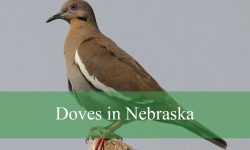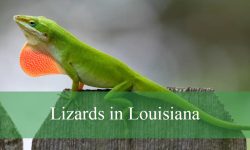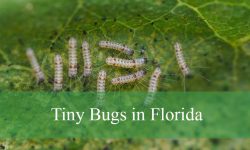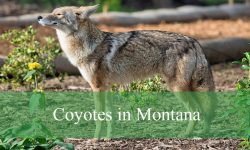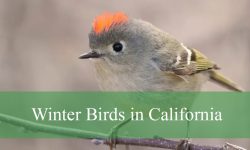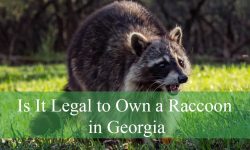Thrushes in Connecticut are a diverse and captivating group of birds, admired for their spotted plumage and beautiful, flute-like songs. These medium-sized songbirds can be found in woodlands, parks, fields, and even backyards throughout the state, especially during spring and fall migration.
Some thrushes in Connecticut are year-round residents, like the American Robin and Eastern Bluebird, while others such as the Wood Thrush and Veery arrive in spring to breed. Migratory species like the Swainson’s Thrush and Gray-cheeked Thrush pass through quietly, often staying hidden in dense understory during their brief stopovers.
This guide highlights seven species of thrushes in Connecticut with detailed identification tips, photos, song descriptions, and habitat information. Exploring these birds will bring a deeper connection to the natural sounds and beauty found in the state’s forests and green spaces.
Common Thrushes Found in Connecticut
American Robin (Turdus migratorius)
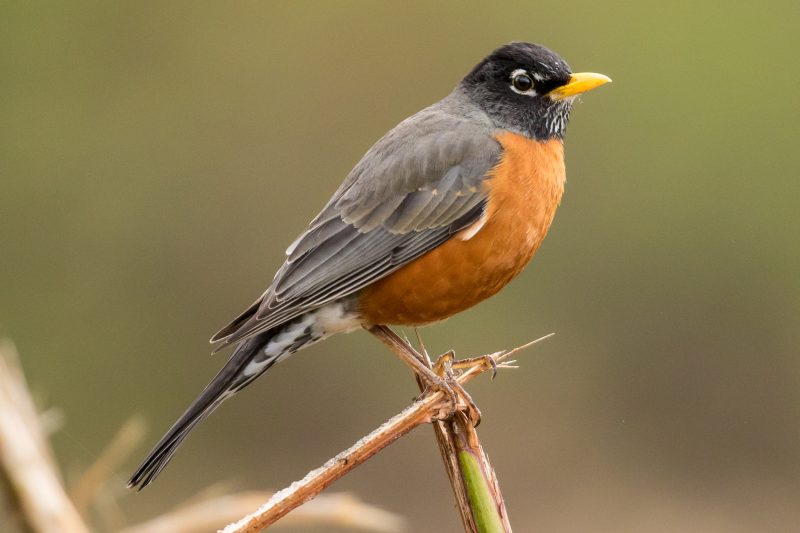
The American Robin is one of the most familiar and widespread thrushes in Connecticut, easily spotted throughout the year in a wide variety of habitats including parks, lawns, woodlands, and suburban backyards. This species is known for its adaptability to both urban and rural environments, often seen hopping across grassy areas in search of food. Its presence is so common that it’s often considered a harbinger of spring, although many robins now stay year-round in the state.
You can identify the American Robin by its bright orange-red breast, contrasting with a slate-gray back, wings, and tail. Its head is usually darker, especially in males, and it has a broken white eye ring. In flight, the robin’s white belly and underside of the tail are also noticeable. It measures about 9 to 11 inches in length with a wingspan around 12 to 16 inches, making it a relatively large member of the thrush family.
The American Robin’s song is a clear, whistled series of phrases, often described as “cheerily, cheer-up, cheerio.” It is most often heard at dawn and dusk and contributes to the familiar soundscape of spring and summer mornings. In addition to its song, the robin has a sharp “tut-tut-tut” alarm call when disturbed.
This species feeds on a wide diet, including earthworms, insects, and a variety of fruits and berries. You’ll often see robins tugging at worms in lawns or flying into fruiting shrubs to pluck berries. Their foraging behavior is energetic and methodical, and they often tilt their heads to locate prey by sound. In Connecticut, robins are year-round residents, though some migrate south during particularly harsh winters.
Hermit Thrush (Catharus guttatus)
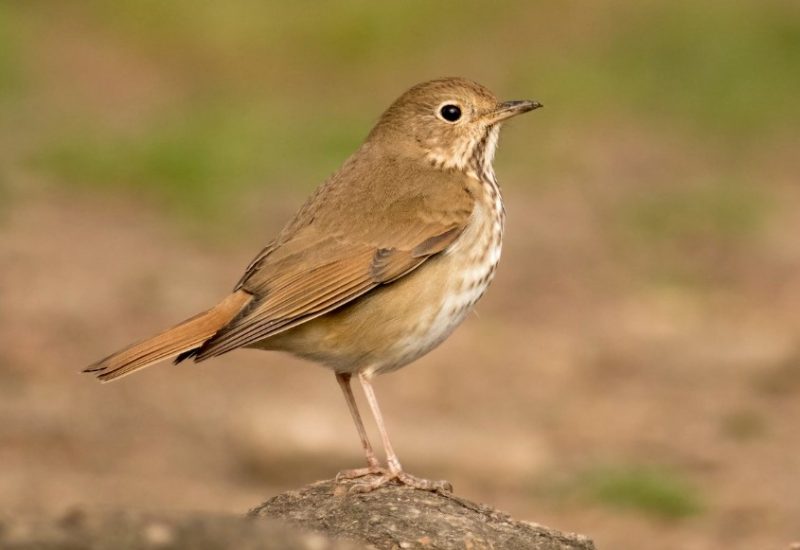
The Hermit Thrush is a more elusive thrush that can be found in Connecticut primarily during the colder months, typically from fall through early spring. It is one of the few thrushes to overwinter in the state, especially in southern areas with suitable cover and food. These birds prefer quiet, wooded areas, especially those with dense undergrowth or thickets.
This species has a warm brown upper body with a contrasting reddish tail, which it often flicks in a distinctive downward motion. Its underparts are white with bold, dark spots on the throat and breast. Compared to other spotted thrushes, the Hermit Thrush appears more compact and has a gentle expression, with a thin white eye ring and slender, straight bill. It measures about 6.5 to 7.5 inches in length with a wingspan of 11 to 12 inches.
The Hermit Thrush is especially known for its ethereal, flute-like song, often considered one of the most beautiful bird songs in North America. However, its haunting melody is usually heard during the breeding season, which takes place farther north or at higher elevations. In Connecticut, it is mostly silent in winter, though occasionally it may give a soft “chup” call.
Hermit Thrushes forage on the ground for insects and other small invertebrates, but they also consume berries during the colder months. You may spot one flipping leaves or quietly hopping through leaf litter in a shaded forest. Although more shy and retiring than the American Robin, the Hermit Thrush can still be found in well-wooded parks and nature preserves across Connecticut.
Wood Thrush (Hylocichla mustelina)
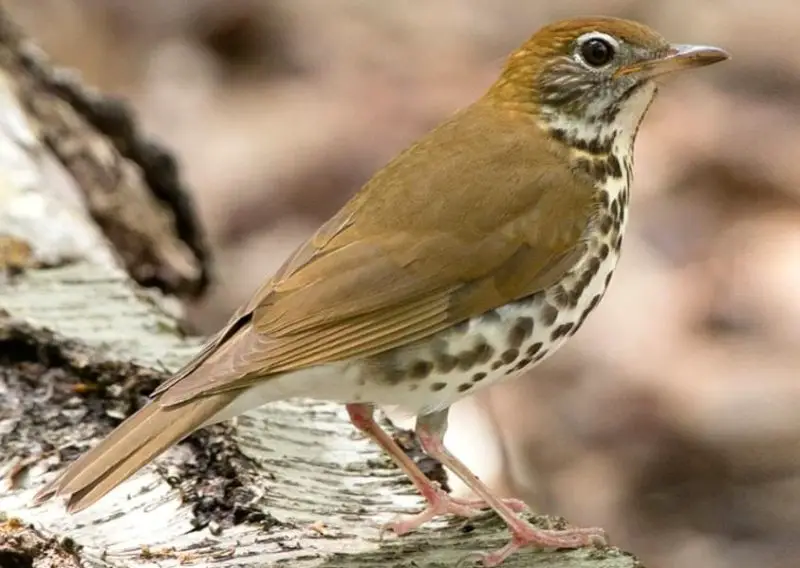
The Wood Thrush is a summer breeder in Connecticut and is typically seen from late April through early September. It is most active in mature deciduous forests with a rich understory of shrubs and saplings, where it nests and forages in the leaf litter. This species is sensitive to habitat fragmentation and is most likely to be found in large, continuous tracts of forest.
This bird has a warm reddish-brown head and back, with bold black spots on a clean white breast and belly. Its large eyes are accentuated by a white eye ring, giving it a soulful expression. The Wood Thrush is slightly smaller than an American Robin, measuring about 7.5 to 8 inches in length with a wingspan of 12 to 13 inches. It has a robust build and straight bill, ideal for picking up insects from the ground.
The Wood Thrush is celebrated for its rich, flute-like song that echoes through eastern forests during early mornings and late afternoons. Its song consists of clear, melodious phrases separated by trills and pauses. This haunting and complex song is considered a hallmark of eastern North American woodlands in spring and summer.
In terms of diet, Wood Thrushes consume a mix of insects, spiders, and other small invertebrates during the breeding season, along with fruits and berries later in the summer. They forage primarily on the forest floor, flipping leaves and probing the soil. In Connecticut, they are found in forest preserves, nature centers, and even larger wooded backyards in rural and suburban areas during the warmer months.
Veery (Catharus fuscescens)
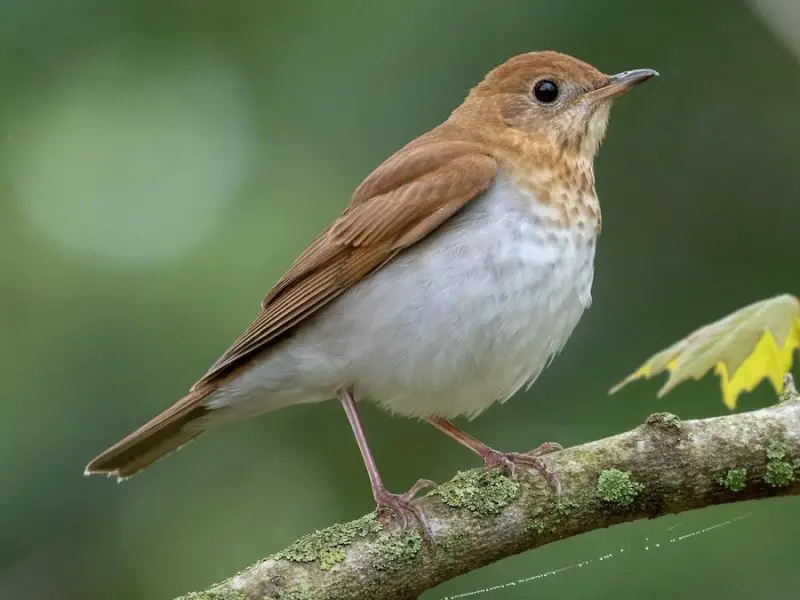
The Veery is a migratory thrush that breeds in Connecticut’s moist woodlands during the late spring and summer months. It favors lowland deciduous forests, especially those near streams or wetlands, where dense understory vegetation provides good cover for nesting and foraging. This elusive bird arrives in the state by mid-May and usually departs by late August or early September.
Easily recognized by its warm cinnamon-brown upperparts and lightly spotted pale underparts, the Veery has a soft appearance compared to other spotted thrushes. Its face is relatively plain, with a subtle white eye ring and a slightly paler throat. It measures around 6.5 to 7 inches in length and has a wingspan of 11 inches. Its delicate build and short tail help distinguish it from its close relatives.
The Veery’s song is one of the most enchanting sounds of the forest. It produces a downward-spiraling, flute-like melody that echoes beautifully in dense woods. The ethereal quality of its call has earned it a reputation as one of the most musical of all North American songbirds. Veeries sing most often at dawn and dusk during the breeding season.
Foraging mostly on the ground, the Veery feeds on insects, beetles, ants, and spiders, as well as fruits like elderberries and blackberries in late summer. It is often seen flipping leaves and probing the soil under thick vegetation. Although not as easily spotted as the American Robin, the Veery is a breeding-season resident of many forested state parks and wildlife areas in Connecticut.
Swainson’s Thrush (Catharus ustulatus)
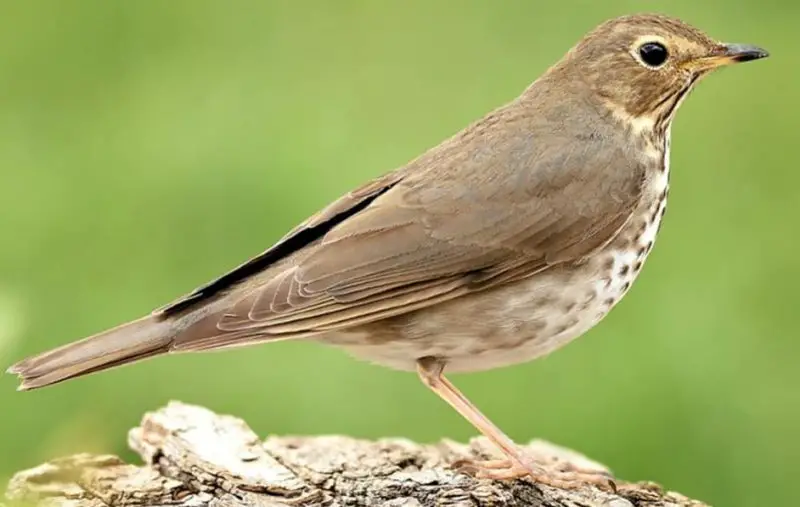
Swainson’s Thrush is a long-distance migrant that passes through Connecticut during the spring and fall. It does not typically breed in the state but can be seen resting and feeding during its journey between its South American wintering grounds and northern breeding territories in Canada and the northeastern U.S.
This species is best identified by its olive-brown upperparts and distinct buffy eye-ring, which gives it a “spectacled” appearance. Its underparts are pale with fine, dusky spots across the chest and sides. Slightly larger than the Hermit Thrush, Swainson’s Thrush averages about 6.5 to 7.5 inches in length with a wingspan of approximately 11 to 12 inches.
Swainson’s Thrush is celebrated for its beautiful, upward-spiraling song that resembles a rising flute. However, during migration through Connecticut, it is more likely to be heard giving a soft “whit” call note in dense understory or shrubbery. The full song is typically heard only on its northern breeding grounds, though it may vocalize faintly during stopovers.
Feeding primarily on insects and berries, this thrush is most often found in wooded areas, forest edges, and shrubby thickets during migration. It tends to stay hidden in dense cover and moves quietly, making it challenging to observe. Swainson’s Thrush is a notable but transient visitor in Connecticut during the months of May and again in September.
Gray-cheeked Thrush (Catharus minimus)
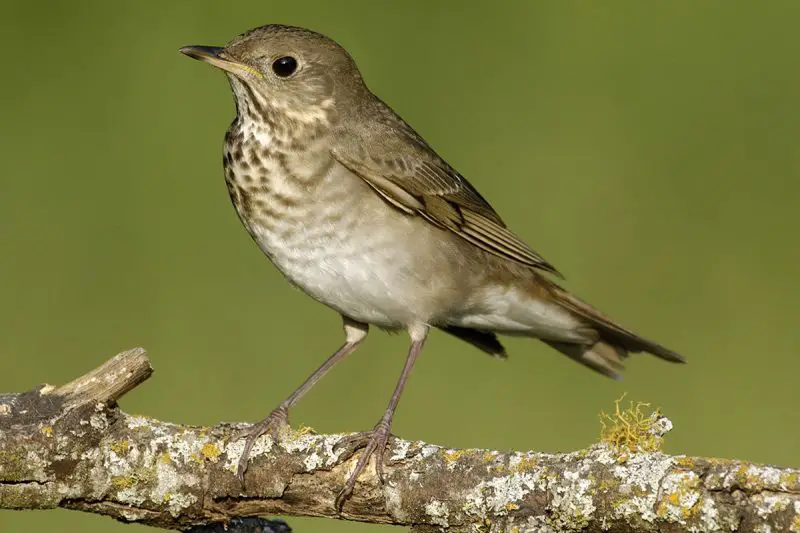
The Gray-cheeked Thrush is a rare and somewhat secretive migrant that passes through Connecticut mainly in late spring and early fall. It does not breed or overwinter in the state and is considered an uncommon sighting even during migration, favoring remote forested areas and dense underbrush.
This bird is best distinguished by its grayish cheeks and the absence of a distinct eye-ring, which helps separate it from the similar Swainson’s Thrush. It has a plain brownish-gray back and heavily spotted white underparts. It is roughly the same size as its close relatives, measuring 6.5 to 7.5 inches in length with a wingspan near 11 inches.
Unlike some other thrushes, the Gray-cheeked Thrush is very quiet during migration. It gives only a few subtle calls and rarely sings unless on its breeding grounds in the boreal forests of Canada. When it does vocalize, its song is a thin, rising warble, more abrupt than the musical spirals of Swainson’s or Hermit Thrushes.
Gray-cheeked Thrushes forage on the ground for insects, spiders, and small fruits, often in dimly lit understory habitat. Due to their elusive behavior and preference for dense cover, they are hard to detect, but birders in Connecticut may occasionally find one during peak migration in late May or mid-September, especially in larger forest preserves and coastal migrant stopover sites.
Eastern Bluebird (Sialia sialis)
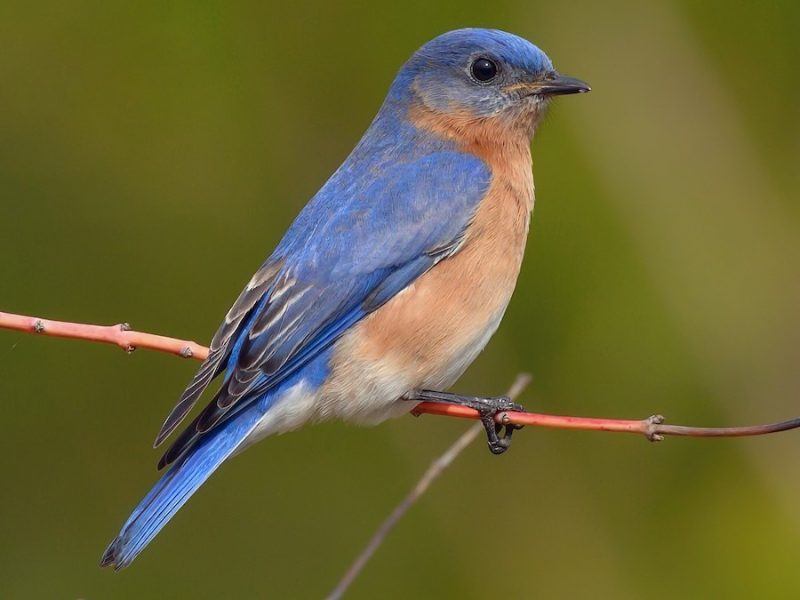
The Eastern Bluebird, while often thought of separately from true thrushes, is a member of the thrush family (Turdidae) and shares many characteristics with its relatives. This charming species is found across Connecticut year-round, particularly in open meadows, pastures, orchards, and fields where nest boxes are provided.
Adult males are striking with bright blue plumage on the back, head, and wings, contrasted by a rusty red throat and chest and a white belly. Females have a more subdued appearance, with grayish-blue wings and tail and a paler, warm-toned breast. Eastern Bluebirds measure around 6.5 to 7 inches in length with a wingspan of 9.5 to 12 inches. Their upright posture and gentle demeanor make them easily recognizable.
The song of the Eastern Bluebird is a soft, musical warble, often described as “cheer cheerful charmer.” They also emit gentle “chir-wi” calls when communicating. Males sing to defend territory and attract mates, often from prominent perches like fence posts or tree branches.
Eastern Bluebirds primarily eat insects such as beetles, caterpillars, and grasshoppers during spring and summer, and switch to berries and fruits in fall and winter. They are cavity nesters and readily use human-provided nest boxes, which has helped their population rebound. In Connecticut, they are commonly seen in farmlands, nature preserves, and backyard nest box trails throughout the year.
FAQ About Thrushes in Connecticut
What are the most common thrushes found in Connecticut?
The most common thrush in Connecticut is the American Robin, found year-round in urban and rural areas. During spring and summer, Wood Thrushes and Veeries breed in forested habitats. Other seasonal or migratory thrushes include Hermit Thrush, Swainson’s Thrush, Gray-cheeked Thrush, and the Eastern Bluebird, which belongs to the thrush family but is often considered separately.
When is the best time to see thrushes in Connecticut?
Spring and fall migration (April–May and September–October) are the best times to spot a variety of thrushes, especially Swainson’s Thrush and Gray-cheeked Thrush. Veeries and Wood Thrushes are more visible in late spring and summer. The Hermit Thrush is often seen in winter, and the American Robin and Eastern Bluebird can be observed year-round.
How do I identify a thrush?
Thrushes typically have spotted or streaked breasts and are medium-sized with upright postures. The American Robin has a red-orange chest and gray back, while the Veery is cinnamon-brown with faint chest spots. Swainson’s Thrush has a buff eye ring and olive-brown back, whereas the Gray-cheeked Thrush lacks an eye ring and has grayish cheeks. The Eastern Bluebird stands out with its blue feathers and reddish chest.
What do thrushes eat?
Thrushes eat a variety of foods depending on the season. Insects, earthworms, and spiders are primary sources of protein during the breeding season. In fall and winter, many thrushes, such as robins and Hermit Thrushes, rely heavily on berries and fruits like dogwood, holly, and elderberry.
Where can I see thrushes in Connecticut?
You can see thrushes in state parks, forest preserves, backyards, and open fields. Wood Thrushes and Veeries prefer mature deciduous forests. American Robins and Eastern Bluebirds frequent lawns, fields, and areas with nest boxes. During migration, Swainson’s and Gray-cheeked Thrushes may be found in dense shrublands or coastal woodlands.

